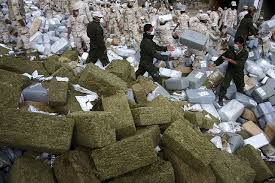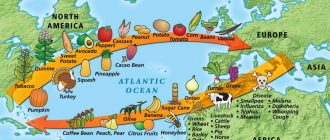Colombian drug cartels refer to the rival and criminal organizations that are involved in illegal drug trade and drug trafficking across several countries in South America, Europe and Asia. Read our guide for more facts and information…
Drug cartels are criminal narcotics-based organizations, which are established exclusively for managing drug trafficking operations. The term ‘drug cartel’ was applied when huge trafficking organizations formed agreements to coordinate the activities of production and distribution networks for cocaine trade.
Origin of Colombian drug cartels
A few of the world’s most violent drug cartels were established in Colombia in the 1970s. Small-scale cocaine smuggling activities led to huge multi-national drug distribution networks, and traffickers gained access to advanced smuggling equipment like submarines. Traffickers have hired engineers from Russia and the US to develop submarines for secret shipment of huge amounts of illegal drugs to the United States. Since the mid-1970s, marijuana traffickers started shipping small amounts of cocaine, which was processed in jungle laboratories at $1500 per kilogram and sold in the US for as high as $50,000 per kilogram.
The Medellin Cartel
It was a criminal enterprise founded by the Ochoa brothers, and Pablo Escobar was the underlying mastermind of the organization. Jose Gonzalo and Rodriques Gacha, who were involved in emerald trade, also joined the cartel. Carlos Lehder, a marijuana smuggler, gave them the idea of flying cocaine in airplanes, rather than transporting endlessly in small suitcases. The large market in the United States brought astounding profits, and it is estimated that during the peak of its operations, the Medellin Cartel made over sixty million dollars per day.
Pablo Escobar is considered to be responsible for the killing of several government officials, prosecutors, police persons, journalists, judges and innocent civilians. His intention to join politics caused a stand-off between the government and the Medellin Cartel, and he was caught and killed in a gun battle with the Colombian Police in the 1990s.
Cali Cartel
Santacruz Londono and Rodriguez Orejuela brothers of Cali were partly responsible for the fall of the Medellin Cartel. They carried out their smuggling business silently, and invested profits in other legitimate businesses and political protection. With increasing competition with the Medellin Cartel, the men of Cali Cartel focused their attack on Pablo Escobar, forming the PEPES (People Against Pablo Escobar) to destroy his businesses, lieutenants and homes. The Cali Cartel also secretly informed the DEA and Colombian Police regarding the whereabouts of Escobar.
They dominated the cocaine trade with high-end technology for acquiring equipment for communication; and as cocaine use in the US dropped, they shipped more drugs to Europe and Asia. The leaders were eventually arrested in the 1990s and sentenced to ten to fifteen year prison terms.
Colombia Today
After the Cali and Medellin cartels were dismantled, smaller groups were formed to smuggle drugs across Colombia and Mexico. Individual groups specialized in separate activities like laboratory-control and transportation. As there are links between the cocaine traders and the Marxists Guerilla groups, the guerillas safeguard the fields and labs in remote areas by receiving tax from the traffickers. The paramilitary groups of the Colombian right wing are said to control the fields, labs and a few smuggling routes.
The biggest threat for the Colombian drug cartels was probably the extradition treaty between the US and Colombia, which permitted Colombia to extradite drug trafficking suspects to the US for trial and imprisonment. According to the DEA and Colombian Police, there are over three hundred drug-smuggling networks in Colombia currently. Cocaine is shipped to almost all industrialized countries at extremely high profits.





